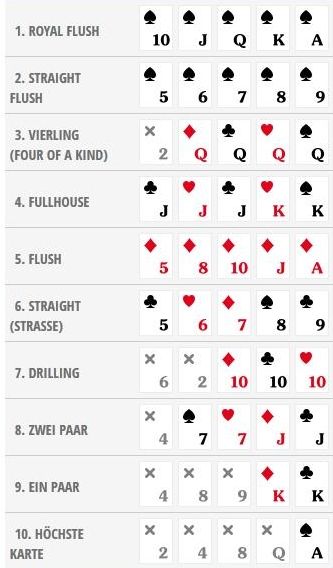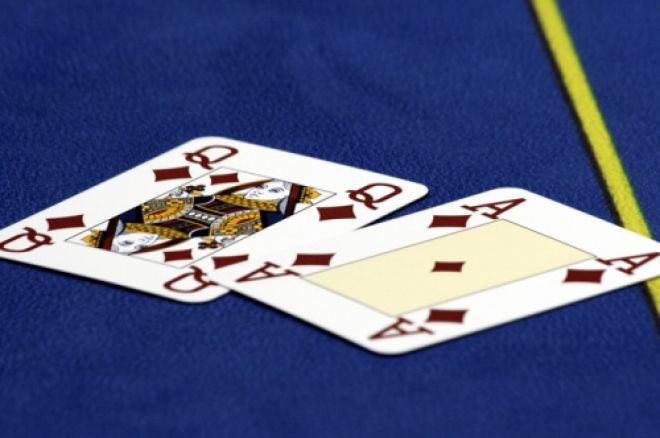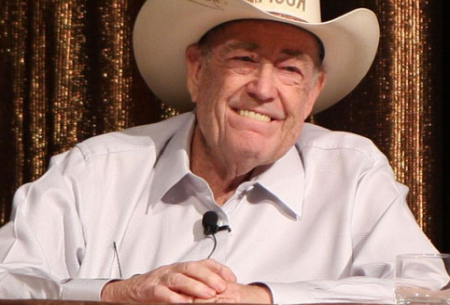Doyle Brunson Hand

Doylebrunson.com is the official personal site of Legendary 10 time World Series of Poker Champion www.DoyleBrunson.com, is exclusively powered and managed by Level Media on behalf of Doyle Brunson.-Information in this document is subject to change without notice.
In order to be a legend, you must loom large in theimagination of your peers. People will give you nicknames, write books aboutyou, and places and things will be named after you. In the world of poker, itisn’t enough to just win big, you need to win big regularly, consistently, andwith style. Poker legend Doyle“Texas Dolly” Brunson is one such man. Not only did he literally write thebook on poker strategy, there’s even a poker hand named after him.
- The Doyle Brunson Hand may have the best history of all and it’s become arguably the most famous hand in poker. The actual origins of the 10-2 are stranger than fiction. Let’s take a ride through some unbelievable poker lore.
- Jul 12, 2019 The Doyle Brunson Hand If you are dealt a weak hand in hold’em and you go on to win the championship with that hand, it’s a fluke. But if you are dealt the same weak hand the following year—and you win the championship again, that hand is yours forever. Such is the case of the Doyle Brunson Hand in Texas hold’em.
- Jan 16, 2019 Drawing a 2 and 10 hand has a legendary quality because poker pro-Doyle Brunson captured two World Series of Poker Bracelets with it. On the face of it, it is not a good hand. Brunson is one of the all-time best players of the game.
- The 'Doyle Brunson ' is common slang for 2 particular pre-flop hands in the variation of Poker known as ' Texas Hold 'Em '. These hands are 10-2 offsuited, and A-Qo. The former is named the Doyle Brunson because Doyle Brunson, the actual living poker legend, won the World Series of Poker with this hand twice consecutively.
When Gambling Was forOutlaws
84-year-old Doyle Brunson has spent over 50 years playinghigh-stakes poker in every kind of tournament, championship, and casino thereis. In the early days of poker, professional gambling was unheard of, and mostwagering was done in hidden back rooms of dangerous bars run by pimps andthieves. A gambler could make hundreds of dollars per night with a solidstrategy and a lucky streak, but he could just as easily meet the business endof a knife or a gun.

Doyle Brunson admitted to being beaten and robbed severaltimes while gambling in joints along ‘Bloodthirsty Highway,’ the gambler’schain of back-room card games in Texas and beyond. Eventually, “Texas Dolly”met up with “Sailor” Roberts and “Amarillo” Slim, and a Texas poker trio wasborn. While they all bore the nicknames of legends, their partnership waslikely born out of necessity. There is much less danger when traveling innumbers; each player could watch the other’s back. Together, these three amigoswere dubbed the original Texas Road Gamblers.
The Cadillac of Poker

Though he hails from Texas, Brunson was playing classic pokervariants like 5 card draw and 7 card stud for years before he even heard ofTexas hold‘em. In classic poker games, a player only bets twice. With hold‘em,there are four betting opportunities. Brunson called hold‘em a “thinking man’sgame” and “the Cadillac of Poker.” He fully embraced the game, and began toprefer hold’em as his poker game of choice. He accurately predicted that Texashold’em would one day become ‘The Game’ poker players would play the most.
But before Texas hold’em met with the popularity it enjoystoday, the game was hard to find, even for professional poker stars like theTexas Road Gamblers. In the late 50s, LasVegas was one of the only places a gambler could play hold’emprofessionally, and Vegas was hardly in its heyday. The famous Las Vegas Strip wasin its infancy, and the Vegas mega resorts had not yet exploded onto the worldgambling scene. The only place you could play hold’em was in the Golden NuggetCasino in Downtown Las Vegas. As the floor was covered in oily sawdust, thehold’em room in the Golden Nugget rarely drew any high rollers.
A Brush with Death
Soon after his hold’em epiphany, Brunson was holding on fordear life after a cancer diagnosis at the early age of 28. Doctors gave himonly four months to live, but when they performed surgery a few weeks later,they found no traces of cancer. The ‘spontaneous remission’ spurred a new leaseon life for Brunson, as well as a big change in his poker game.
Brunson’s brush with death put a different spin on the wayhe saw winning. He concentrated less on losing the pot, and more on aggressiveplaying techniques. He called more bluffs, and went ‘all-in’ on a regularbasis. And his new style paid off. After decades of dominating the card roomcircuit, Brunson began winning big in Reno and Vegas casinos. In a casinocalled Binion’s Horseshoe, a new high stakes poker game sprung up from the oilysawdust: the World Series of Poker. The WSOP has gone on to become the premierpoker tournament in the world, and “Texas Dolly” Brunson has played in themall, and holds one of the greatest all-time poker playing records in history.
The Doyle BrunsonHand
If you are dealt a weak hand in hold’em and you go on to winthe championship with that hand, it’s a fluke. But if you are dealt the sameweak hand the following year—and you win the championship again, that hand isyours forever. Such is the case of the Doyle Brunson Hand in Texas hold’em. In the1976 WSOP, Brunson drew a 10 and a 2 as his hole cards. His opponent had A-Jbefore the flop, which came up A-J-10, giving Brunson a pair of 10s and hisopponent two pair. Brunson went all in with his weaker hand. The turn and theriver showed a 2 and another 2, giving Brunson a full house to win $230,000 andthe championship!
The following year in 1977, Brunson drew the exact same 10-2hand in the final round of the championship. The flop of 10-8-5 gave Brunson apair and his opponent (8-5 hole) two pair. Once again, the 2 hit on the turn,and Brunson had two pair. His opponent went all-in, and Brunson called. Whenthe river card was dealt, it came up 10, and Brunson won the championship forthe second year in a row (cash – $340,000), with the exact same full house of10s and 2s. From that moment on, the 10-2 hand has been called the DoyleBrunson.
The Godfather ofGambling
Doyle Brunson has won over 6 million dollars in total livetournament winnings over his life. This figure does not account for his ‘unofficial’card games casinos, back room bars, and dusty saloons. But needless to say,“Texas Dolly” has earned a jolly good living from playing poker. He has won 10WSOP gold bracelets marking his 10 championship wins over the years. Butperhaps his biggest contribution to the game of poker was his book on thesubject. Doyle Brunson’s Super System: A Course in Power Poker, changed pokerculture forever. Before he published his poker primer, a gambler’s strategy wasa secret. Like a magician revealing his secrets, Super System revealed a wealthof tips and tricks to a hungry mob of new gamblers.
The Poker Bible
Super System not only explained Brunson’s personal gamblingsystem and methods, it provided key insights into the psychology of the game.Such psychological strategies highlight the need to hide one’s emotions whileplaying (wearing a poker face), and the ability to pick up on other player’s‘tells’ to gain information on the type of hand they are holding. A playerunconsciously delivers this information via nervous twitches, a shifting of theeyes, or a scratch of the nose. All of these signs and more can be examined togive a gambler a winning edge over an inferior opponent.
Super System also explains how to apply reason whileplaying, and the book provides tons of statistics and facts surrounding pokerplay and pokerstrategies. The book opened up the poker world to amateur and professionalalike, and contributed to an explosion in the popularity of poker, tournaments,and online gambling. Brunson said that by publishing the book, it probably costhim more money than he was paid to write it.
Doyle Brunson was inducted into the Poker Hall of Fame, anhonor originated in 1979 by Benny Binion, the owner of Binion’s Horseshoe andthe birthplace of the WSOP. The PokerHall of Fame lists the most prominent players of the game, whether they wongreat fortunes or otherwise left a lasting mark on the game of poker. Among themore notorious names in the Hall of Fame is James Butler Hickok, aka “WildBill.” A notorious Wild West figure and poker player, “Wild Bill” was shot inthe back while playing a hand of poker. That hand included two aces and two 8s,which has since been called the Dead Man’s Hand. The Poker Hall of Fame alsoincludes Bryan “Sailor” Roberts and Thomas “Amarillo Slim” Preston, Doyle“Texas Dolly” Brunson’s poker pals from his Texas Road Gambler days.
You might also like:

“Trouble hands.”
For some players just starting out at no-limit hold’em, every hand might be considered a “trouble hand.” But once you gain some experience and begin to sort out how different starting hands compare and tend to play, that category of “trouble hands” begins to shrink to a certain few that in most situations need to be played with caution.
Let’s take a look at what three hold’em greats have had to say in particular regarding these “trouble hands.”
Doyle Brunson
Many years ago Doyle Brunson devoted a special section to “Borderline or Trouble Hands” in his discussion of no-limit hold’em in Super/System. “They’re hands you can lose a lot of money with,” he explains, “so you should play them very cautiously.”
The hands to which Brunson refers include the following:
- , ,
- , ,
- ,
- ,
For Brunson, these represent hands he does not recommend calling raises with generally speaking, although he qualifies that advice by saying he would do so if certain conditions were present — e.g., when playing from late position, when there has been a raise and a call in front of him (giving him good odds to come along), or when the cards are suited (often tipping him in favor of playing the hands).
He then goes on to explain why the hands can be attractive to play, with straight possibilities and (if suited) flush possibilities being a big part of their attraction. But he advises his readers to be careful with such hands after the flop, concluding with a general warning that “the important point to remember about the trouble hands is when you do get a flop with them you don’t want to get heavily involved. You should just try to play the pot as cheaply as possible.”
Or not at all. Brunson’s special dislike of over the years has been well chronicled. In fact, at one time the hand was ironically named after him because he claimed never to play it.
Dan Harrington
Writing many years later, Dan Harrington in Harrington on Cash Games added his own thoughts about the “trouble hands,” narrowing the list somewhat to focus on five in particular:
- , ,
- ,
(Harrington takes out the hands with aces and the lower connectors as he discusses them separately.)
If you look at the hands he’s chosen to focus upon, he’s chosen almost all of the non-ace hands that contain two Broadway cards (except ). All are attractive to us because of the relatively high ranking of the two cards, but as Harrington explains, that is precisely why these hands tend to cause trouble.
“Since the hands all contain high cards,” he explains, “they look like hands you want to play, and in many cases they are hands you want to play. In no-limit hold’em, however, they require an extra measure of caution because they are easily dominated by ace-high hands or even other hands of the group.”
By “dominated” Harrington refers to the situation of sharing the same hole card with an opponent who holds a higher “kicker” or second card. If I am playing and you hold , I have a “dominated hand” that can get me in real trouble should a king come among the community cards.
Todd Brunson
That’s precisely the situation Harrington speaks of when echoing Brunson’s advice to proceed with caution after the flop with such hands. “When you play these hands, hit the flop with one high card, and then get action, you won’t know exactly where you stand. You may have top pair, with no obvious straights or flushes, and still have to let the hand go because of the implicit danger to your whole stack.”
Harrington adds further instruction about how unless you hit something big (e.g., a straight, flush, trips or better, etc.), these “are not hands to take to the river in a big pot” and how they aren’t good hands with which to be calling opponents’ raises.
Daniel Negreanu
In More Wisdom Hold’em for All Players, Daniel Negreanu drills down even further into the category of “trouble hands” to focus on one in particular — — a hold’em starter he calls “a dubious hand.”
“Novice players commonly overvalue the strength of when they flop a pair to it,” writes Negreanu, again highlighting the same tricky postflop spot both Brunson and Harrington draw attention to as well. As he explains, after a queen-high flop (for example), “most amateur players... aren’t sophisticated enough to know when to play the hand to the river and when to let it go.”
Like Brunson and Harrington, Negreanu is not keen on calling opponents’ raises with , and while he also points out that being suited helps, his main point is for players not to “get fooled into thinking is a premium hand.”
By the way, once Negreanu came up with a different nickname for , one not named after Brunson. He called it “1.4” — a reference to how he estimated he'd lost $1.4 million with it!
Conclusion
To summarize the advice of these three writers regarding “trouble hands,” proceeding with caution is most obviously the common message. Understand that flopping top pair with hands like , , , , or against a single opponent might well be enough to win a pot, but in most cases don’t be too anxious to build a big pot as you might be dominated.
Meanwhile against multiple opponents, flopping just a pair with these “trouble hands” is likely a spot in which you should find a fold, especially when facing others’ betting. However, those might be situations in which you do flop straight or flush draws and can get reasonable odds to proceed.
Even so, don’t let the “trouble hands” get you into too much trouble, and know that smart preflop decisions with them can help you avoid greater difficulty once the community cards come to complicate your life further.

Get all the latest PokerNews updates on your social media outlets. Follow us on Twitter and find us on both Facebook and Google+!
Doyle Brunson Arrested
Tags
cash game strategytournament strategyno-limit hold'emstarting hand selectionDoyle BrunsonDan HarringtonDaniel Negreanupoker booksRelated Players
Daniel NegreanuDoyle BrunsonDan Harrington